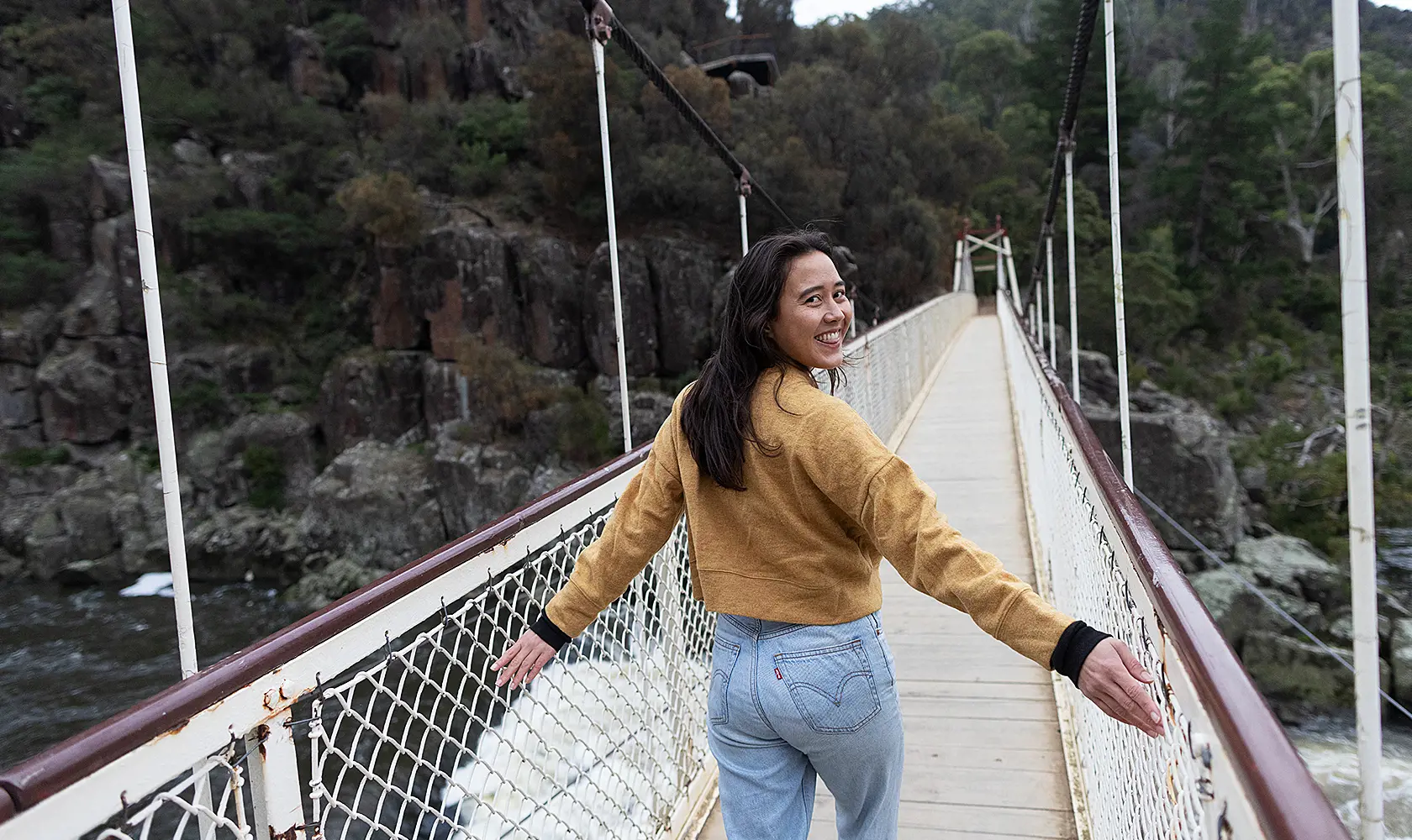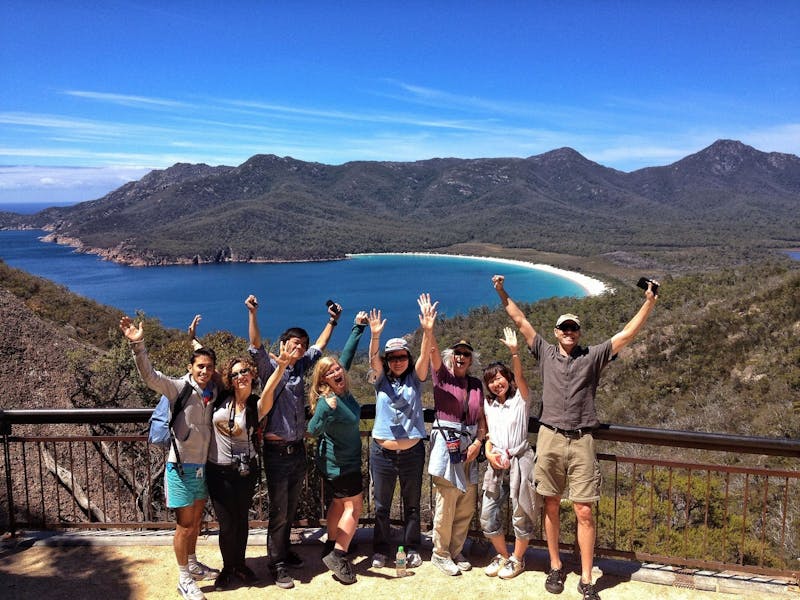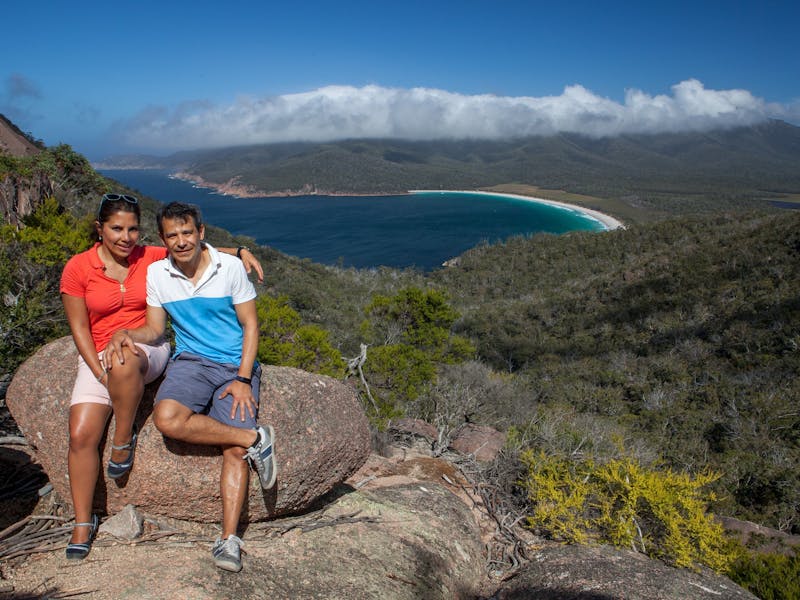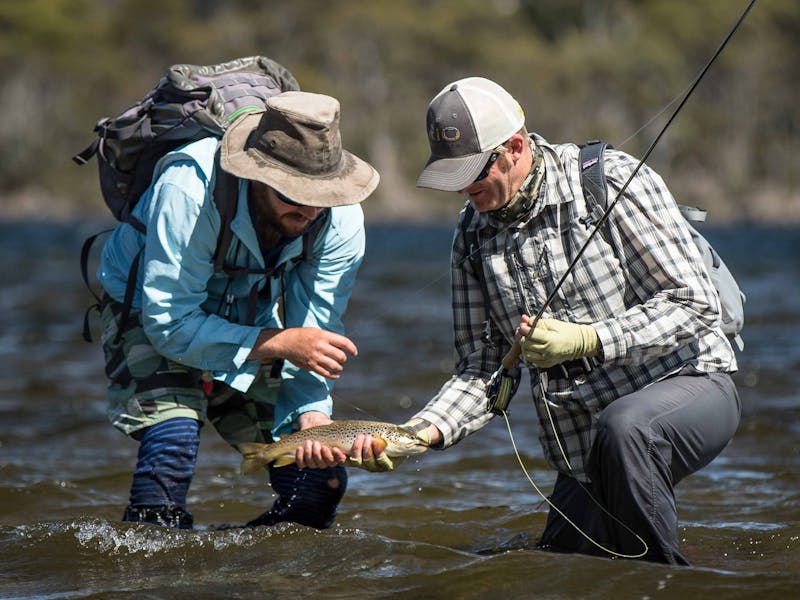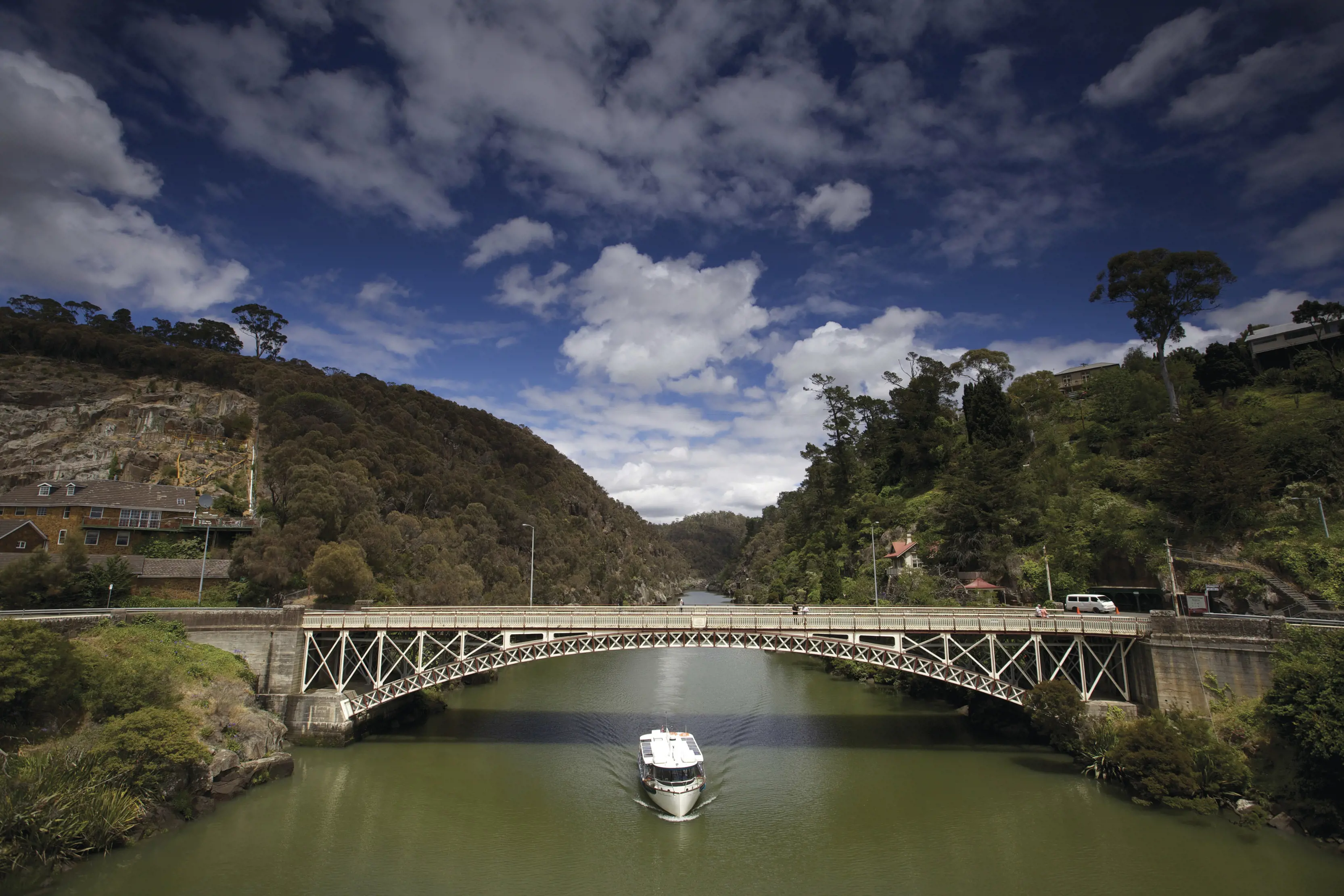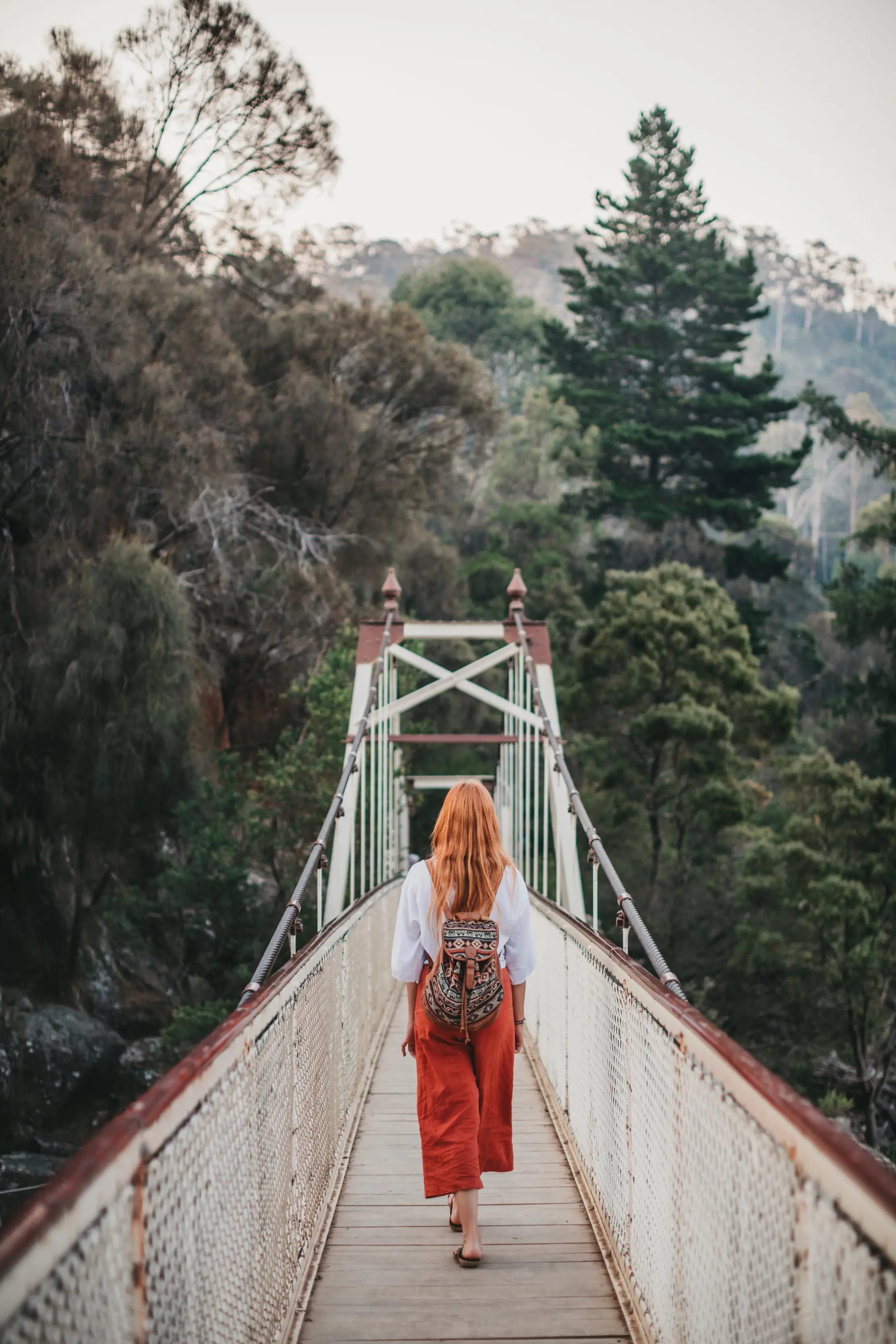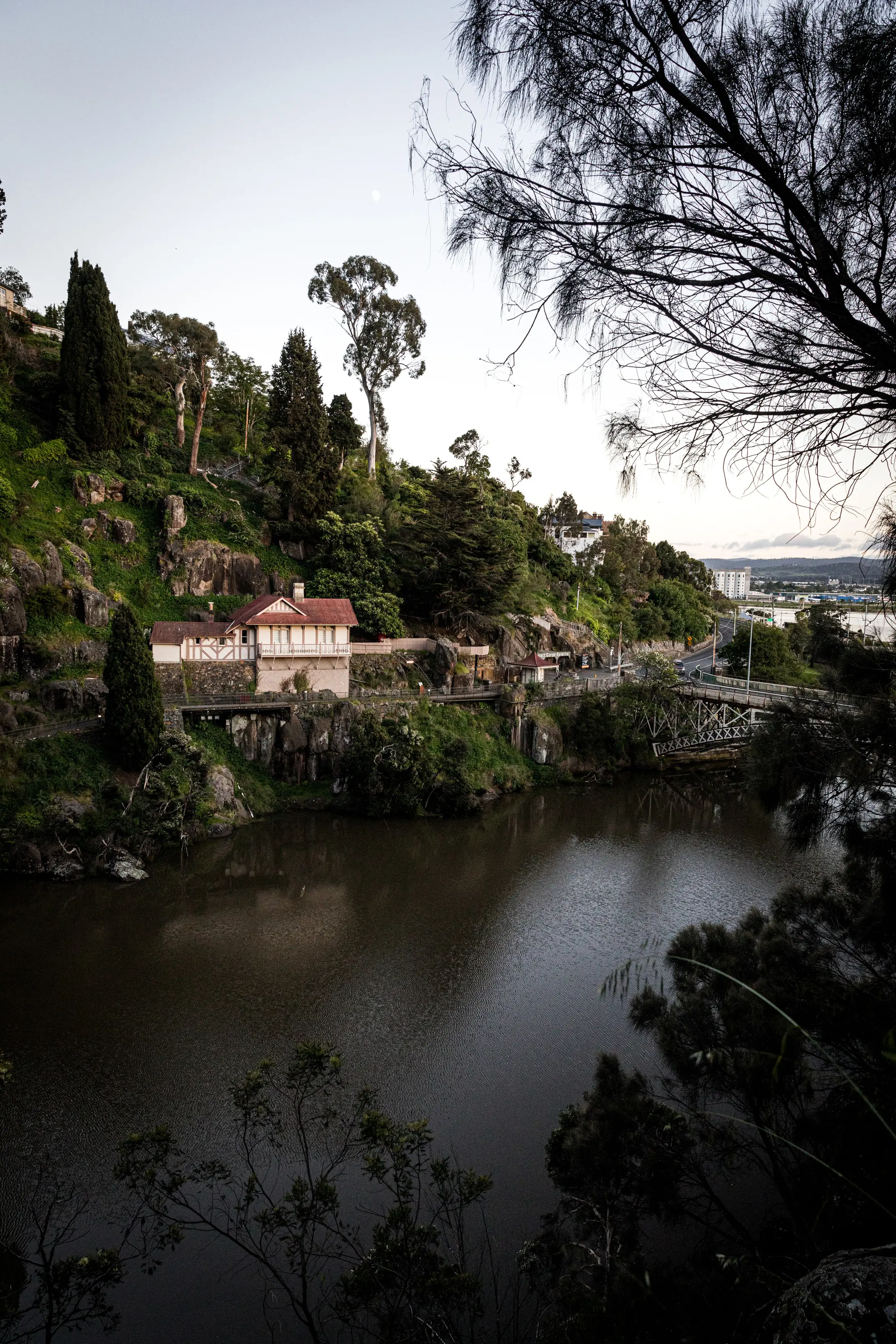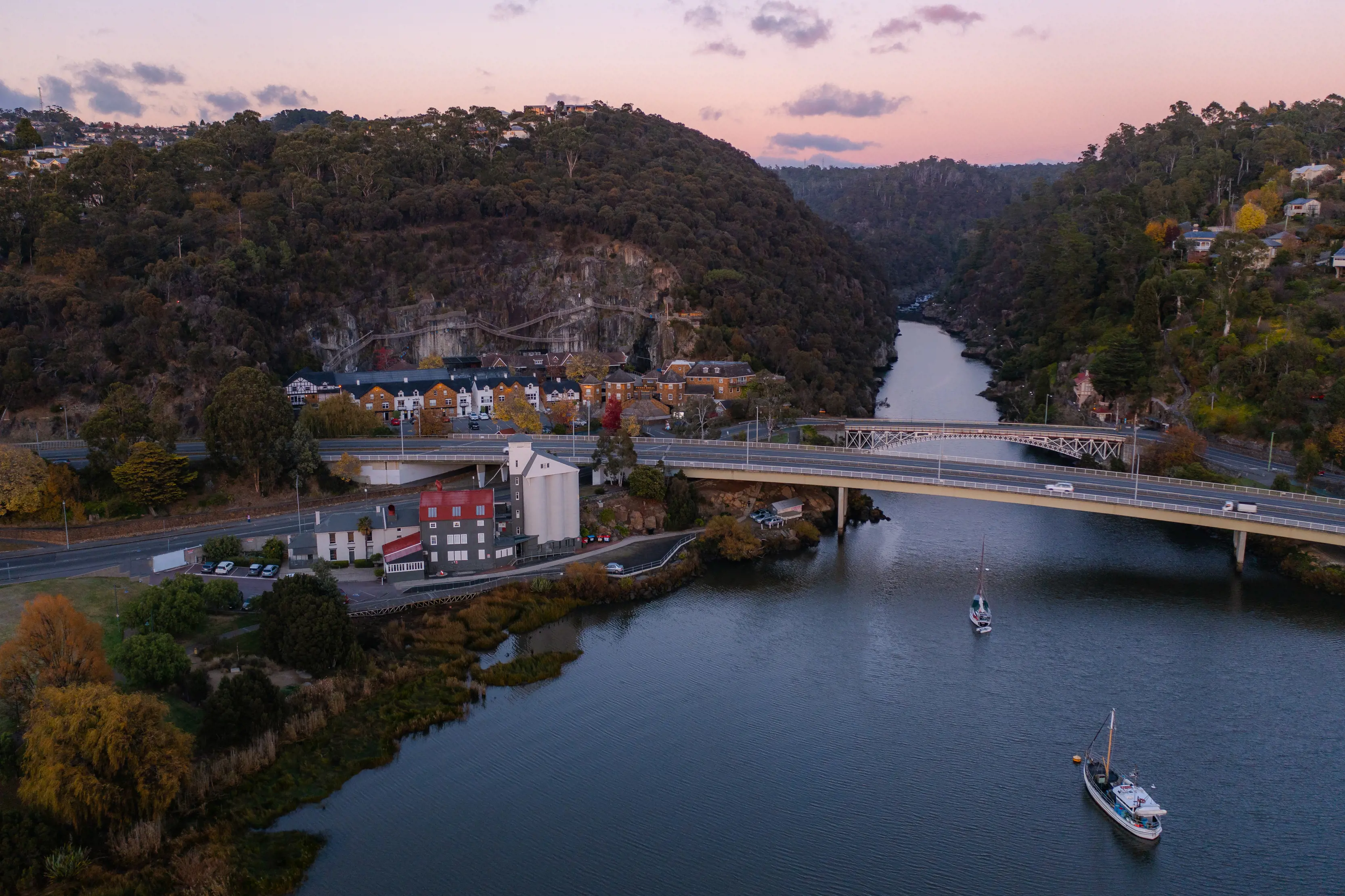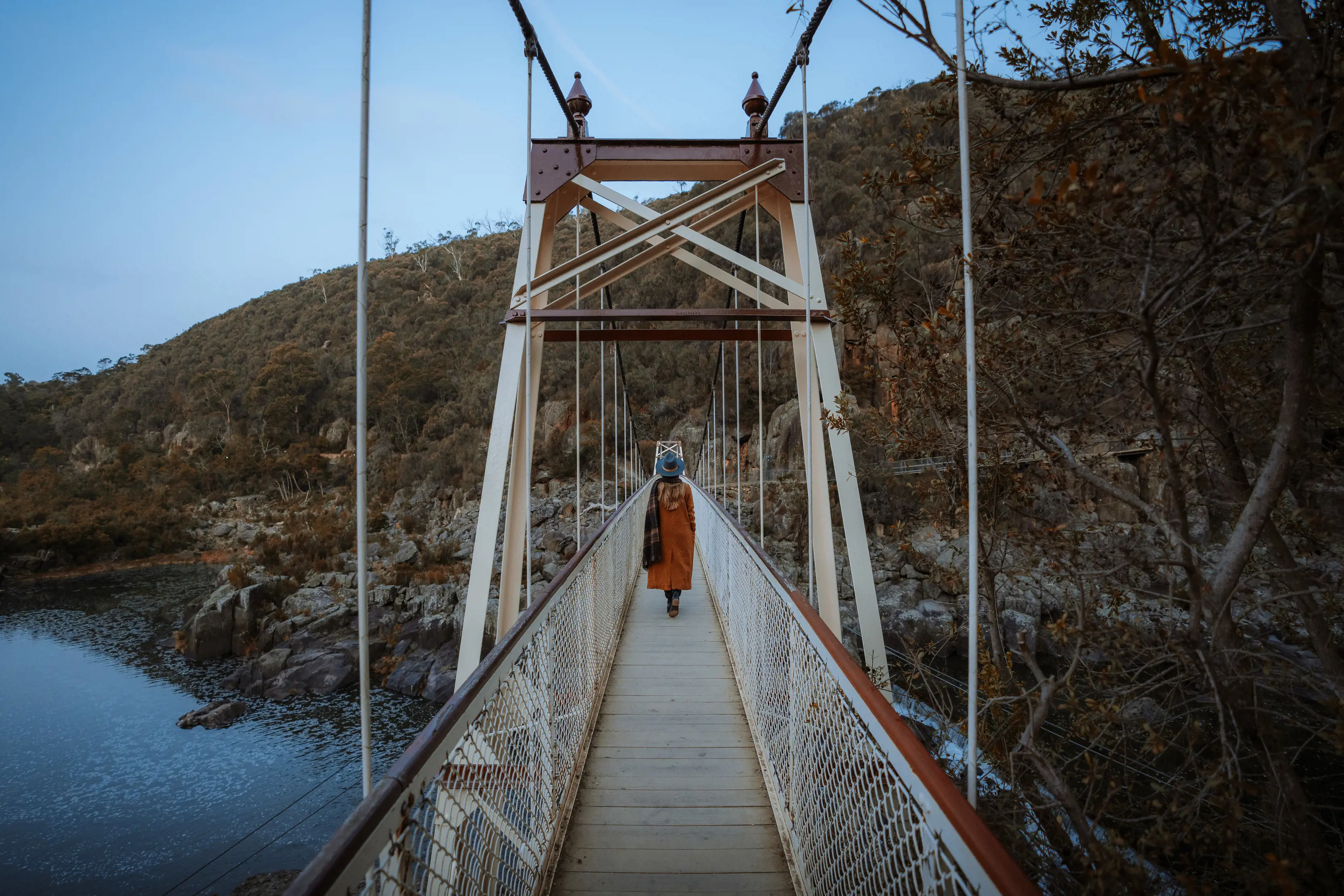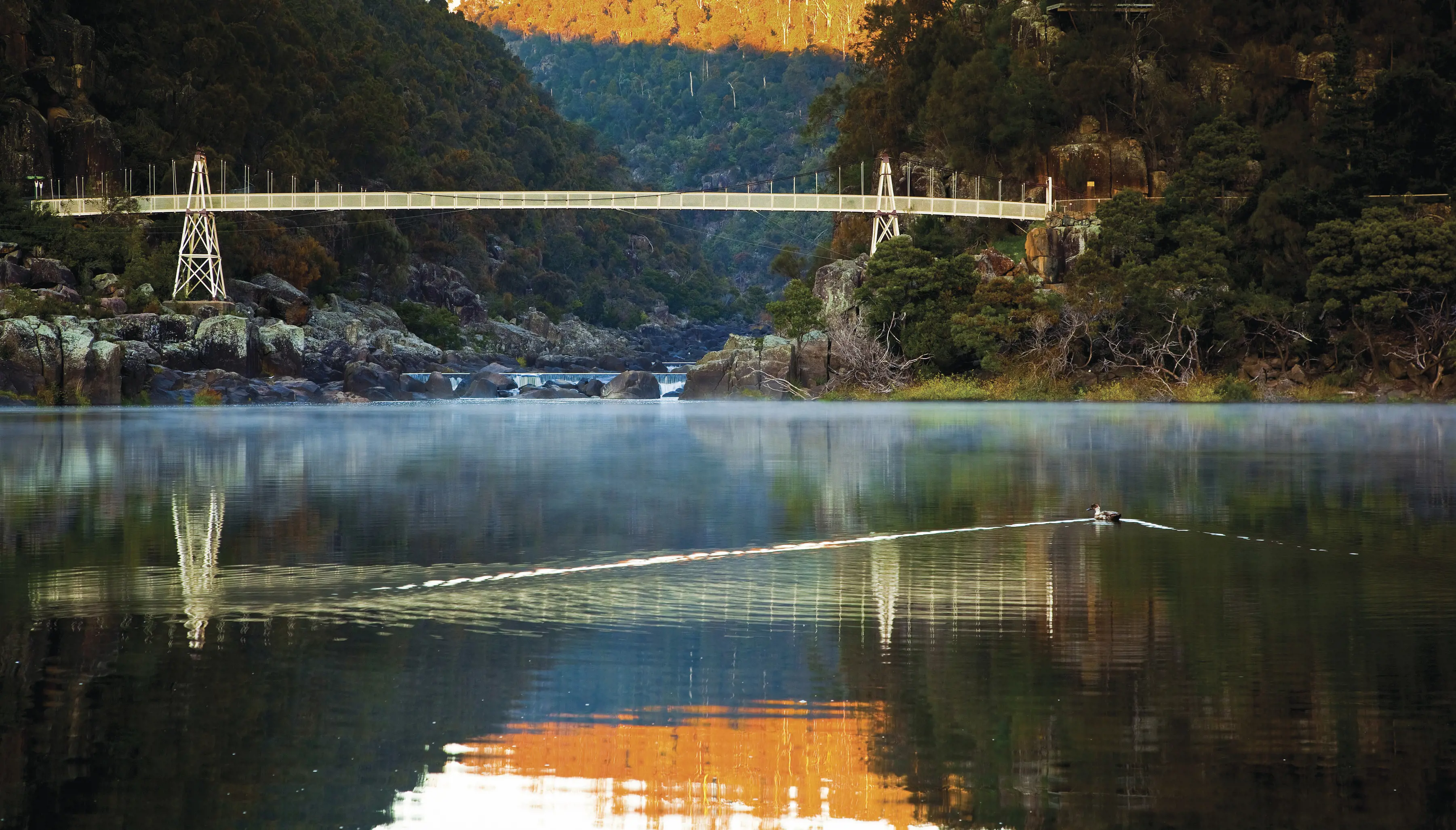
This is true urban wildness – a 5km stretch of forested river reserve wrapped around a dramatic gorge, just a stroll from Launceston’s city centre.
Generations of Launcestonians have cherished Cataract Gorge as their place to reconnect, unwind and relax. The surprising proximity of city and natural serenity makes it special for travellers, too.
“Where in the world can you be in the city and 15 minutes’ [walk] later be in the middle of a 65-million-year-old gorge?” says Jo Larter. Her family has run the much-loved Gorge Scenic Chairlift since 1972.
“There is a calmness that comes over you here. Even when there are lots of people here – she just seems to embrace everyone. Whether you want to walk for hours or just park yourself under a 130-year-old tree, there’s something for everyone.”
The natural history of the gorge, along the South Esk River, stretches back tens of millions of years. And as a significant site for the palawa, the Tasmanian Aboriginal people, its human history is long and rich, too. When William Collins, one of the early European settlers in the area, saw Cataract Gorge, he reported, “The beauty of the scene is probably not surpassed in the world.”
Key features of the gorge are Kings Bridge, built in 1867, and the chairlift, which operates year-round. At 308m, the chairlift’s central span is the world’s longest of its kind. It’s a delightfully slow retro ride, with a chair coming every few minutes from 9am and evening closure times dependent on the season. It can be reached by a free inclinator, increasing accessibility.
“I just love the joy that we, and the gorge, are able to bring people,” says Larter.

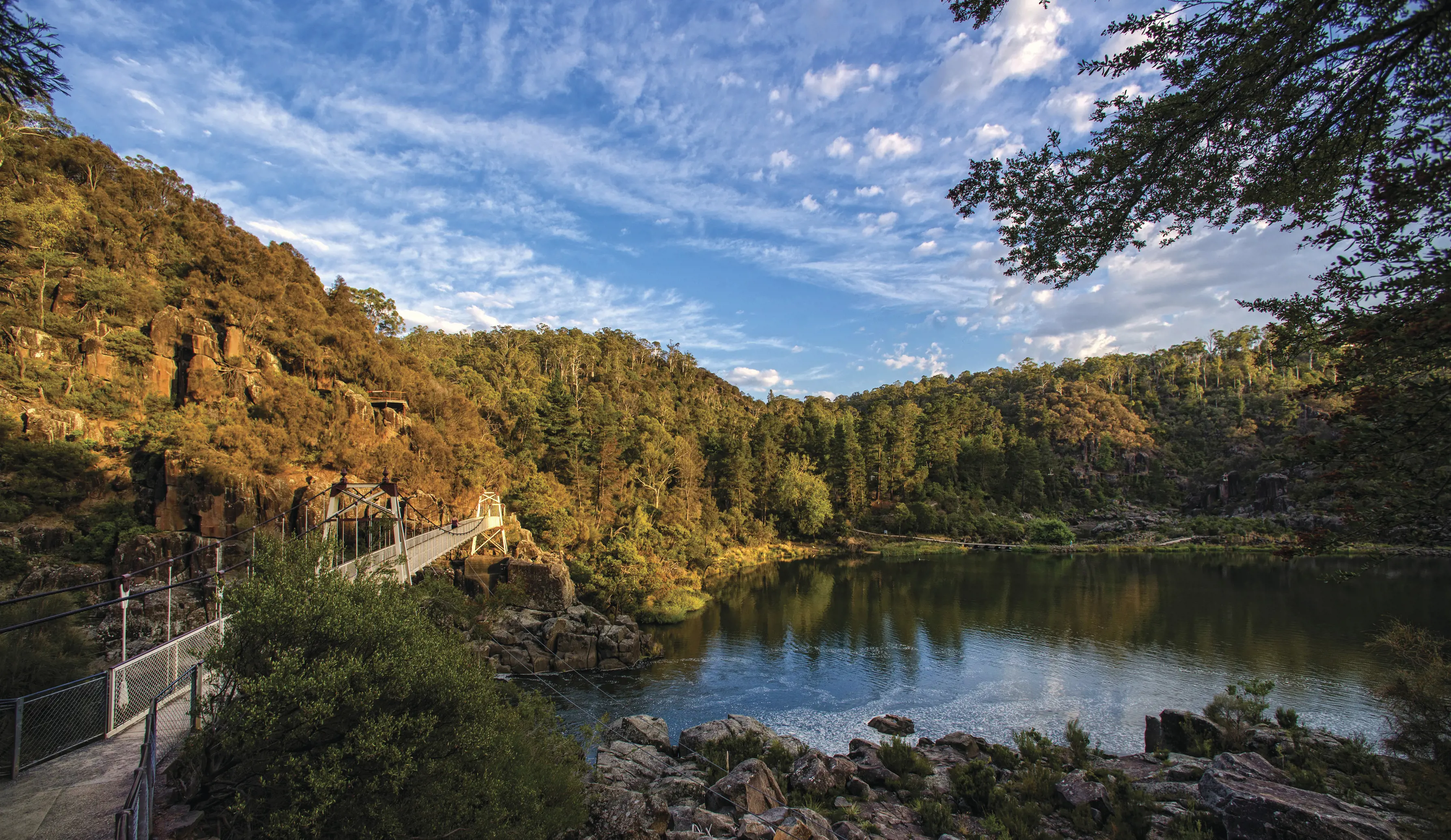
On the fringe of Launceston’s city centre is an old gatekeeper’s residence, Kings Bridge Cottage. It’s located right on Kings Bridge and adjacent to Zig Zag Reserve, which contains a historic and challengingly steep walking trail linking the bridge to First Basin, where most of the gorge’s recreational attractions are.
The reserve features a gated public swimming pool, which is chlorinated and filled only in summer. It’s surrounded by a lawn. Or swimmers can take to the cold waters of the gorge itself.
Linger at Cliff Grounds to visit the historic rotunda, kiosk and picnic areas. Peacocks roam a pretty formal Victorian garden, sometimes alongside grazing wallabies.
Refuel at Basin Cafe, the Gorge Restaurant, or Stillwater, where there’s refined all-day dining in a restored flour mill at the edge of Kings Park, not far from Kings Bridge. Or pack a picnic and settle under a tree.
Walking trails
The gorge is threaded by walking trails through natural grassland, woodland, dry forests and wet gullies where wildlife roams. Popular options include the easy, sealed Cataract Walk, which links Kings Bridge to Cliff Grounds and offers beautiful views (2km return). This track is temporarily closed and is expected to reopen in January 2024.
The easy First Basin Loop has the chairlift overhead and views of the swimming pool lawn (1.8km return). Duck Reach Trail leads to historic Duck Reach Power Station (now a museum) and suspension bridge and is moderately challenging (4km return).
The steep Reed Gully and Snake Gully tracks are challenging; experienced hikers use these to return from the power station in a test of their skills (2km one-way).
Walkers can combine several walks to form a loop, such as Zig Zag Track on the south side of the gorge, the First Basin Loop, Duck Reach Trail — including the suspension bridge at the power station — and Cataract Walk.
Need to know
Cataract Gorge can be accessed via Hillside Cresent by car. If walking from the Launceston city centre, approach via Paterson St and Kings Bridge. While the Cataract Walk is temporarily closed, the Zig Zag Track on the opposite side of the river provides alternative walking access into the gorge. Entry to the gorge is free.
